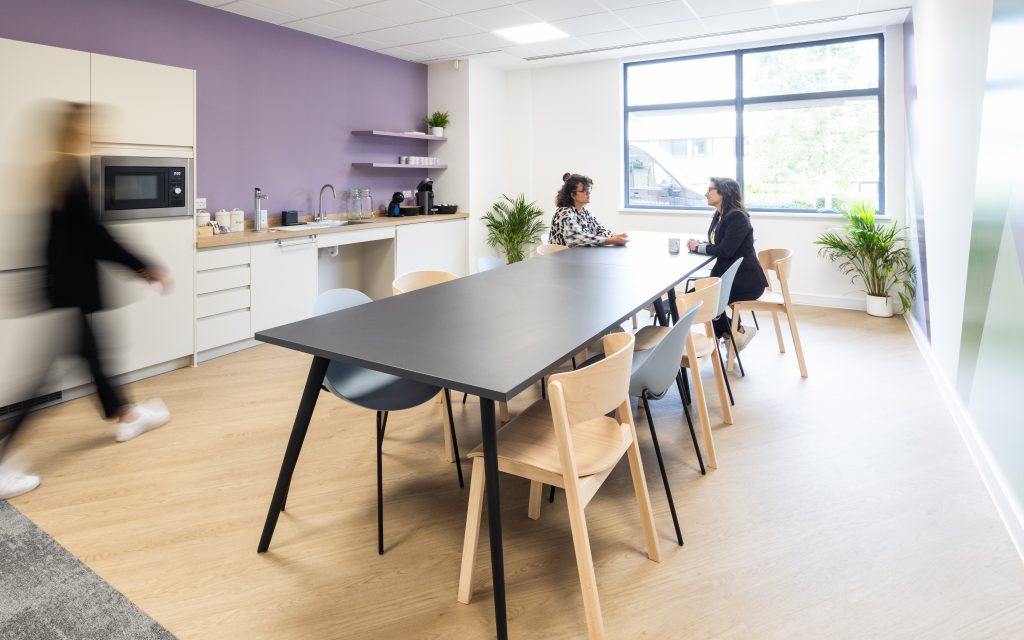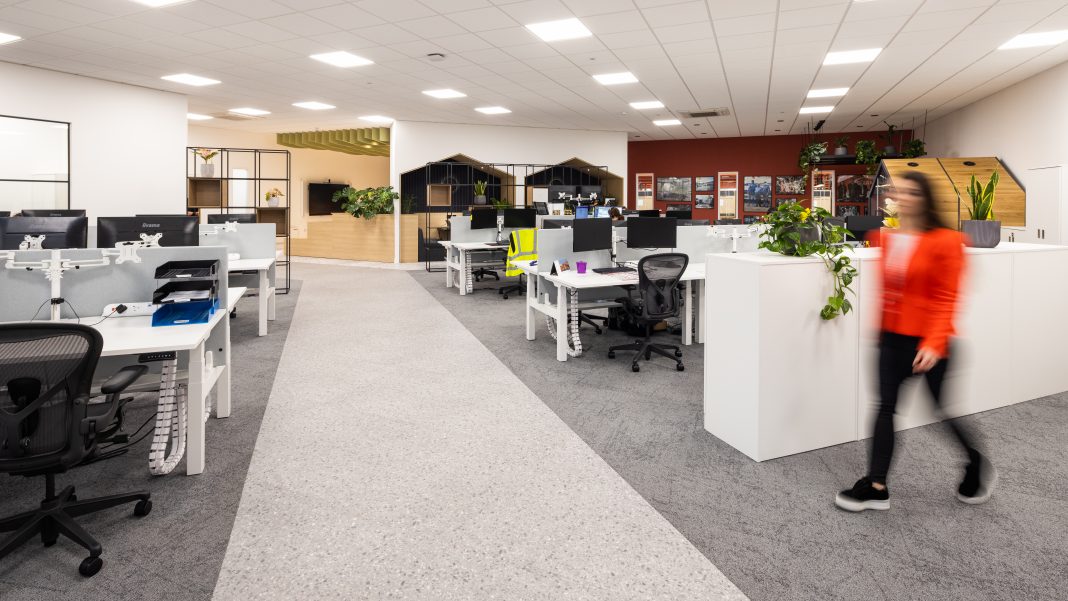Kerr Office Group’s Sarah Payne shares how inclusive workplace design boosts productivity, supports neurodiverse employees, and enhances ROI by creating spaces that cater to diverse needs and foster collaboration.
With employment costs at an all-time high, businesses are once again looking at their fixed costs and how to ensure they’re delivering a strong ROI. The physical workspace is inevitably one of the highest of these, so ensuring it’s fully utilised is more important than ever. A challenging task when you consider that the average home now supports the average knowledge worker better than the average office (Leesman 2024).
Those from underrepresented communities often feel this even more strongly, driving them towards a preference for home-working arrangements that better accommodate their needs. Research from the Trade Unions Congress (TUC, 2024) reflects this trend, with reference to diverse groups often experiencing greater comfort and productivity away from traditional offices. This is largely due to environments that fail to support diverse ways of working or inadvertently reinforce stigma and discomfort.
Ensuring your workplace design genuinely welcomes and includes all of your employees isn’t just the equitable thing to do, it directly links to better innovation, collaboration, and ultimately, competitive advantage.
Benefits well-evidenced by the McKinsey report series that has been investigating the business case for diversity since 2015. Their latest report, the biggest of its kind spanning 1,265 companies and 23 countries, shows this is only increasing over time. Companies with diverse leadership teams are consistently associated with higher financial returns across all industries and regions, regardless of varied challenges, stakeholder expectations and ambitions.
Inclusive design offers benefits for all
While this article is written in celebration of neurodiverse employees and how they can be supported to do their best work, the benefits of inclusive design extends far beyond. Creating a flexible and adaptable workspace with a focus on wellbeing inherently benefits all employees. Features like adjustable lighting, quiet zones, and comfortable break-out spaces contribute to a more positive and productive environment for everyone. Colleagues can move around varied workspaces which support them to deliver the diverse range of work that is expected across any given day. Optimisation of your physical space is only possible when all colleagues are supported to have a positive experience when visiting, meaning your workplace design must cater to the diverse needs of every employee.
What’s more, Gen Z, and in the not-so-distant future Gen Alpha, bring with them an expectation of inclusive and well-considered workspaces.
Businesses that proactively incorporate inclusive design into their strategies today will not only better support their current workforce but also enhance their attractiveness to future talent.
Creating spaces for your neurodiverse colleagues to thrive
The Neurodiversity Index 2023, a study conducted by City & Guilds, concluded that 40% of neurodivergent employees report being impacted most days in the workplace by their condition. This research provides clear evidence that many traditional office spaces are falling short when it comes to meeting the needs of their neurodiverse team members, leading to discomfort, impacted wellbeing, and a reduced ability to perform at their best.

Offering the variety and control to stay comfortable and well
Neurodiversity encompasses a range of neurological differences, such as autism, ADHD, dyslexia, and dyspraxia. To cater to the variety of neurodiverse conditions people identify with, it’s important to build an understanding of these conditions, along with any stimulation cues, ways of working, and potential triggers to be aware of. There isn’t a one-size-fits-all solution, instead, businesses should work to provide plenty of variety and choice in their workspace design, making it easy for individuals to adapt their surroundings to their comfort. At Kerr, we recommend surveying your people to audit the needs that currently exist within your business – this data can then be used to test your workplace design plans and ensure everyone has the right support available.
Spacing: since neurodiverse employees differ in their stimulation cues, ways of working, and triggers, a variety of areas should be designed to cater to each of these. Quiet working areas for focused working without the confines of a closed room or total isolation can be calming. Conversely, accommodating super-minimal hyper-focus rooms that allow employees to work in isolation in an environment that minimises all distractions can also be beneficial for some.
Lighting: how your office is lit plays a major role in making it accessible for those identifying as neurodiverse. Diffused light should be used, and we highly recommend controllable lighting in workspaces to suit unique neurodiverse needs. This flexibility for different tasks allows colleagues to adjust lighting depending on the level of concentration needed or their current mood. Varied light temperatures from warm to cool white are ideal.
Colour and patterns: office spaces can cater to neurodiverse needs by avoiding visually jarring and eccentric patterns. Loud colours and flashy décor walls, while suitable for neurotypical employees, can be detrimental for neurodiverse employees. They can severely hamper their comfort levels.
Stimming elements: stimming, short for self-stimulating behaviours, are common among neurodiverse individuals, especially those with autism. These are repetitive body movements like tapping feet or finger flicking. It helps to manage their emotions, allowing them to calm down feelings of anxiety, fear, or excitement. Neurodiverse office design should provide spaces and materials to support these mannerisms. Having rocking chairs or medicine balls to sit on, desk objects like rubber band balls in the general workspace, or specially designed wellness spaces can be a game-changer.
Designing for a brighter future of work
Incorporating inclusive design principles into your office environment works best as a consultative approach, developing an effective workplace strategy that aligns location, space, people, and business needs.
At Kerr, we recommend starting this process by observing current space utilisation and exploring colleague sentiment regarding how the office is currently used and what improvements could be made. This data-driven approach leads to evidence-based recommendations on how to optimise the available space, providing your people with an environment where they can deliver their best work through increased wellbeing, creativity, and productivity.
Staying committed to inclusivity
Creating a truly inclusive workspace isn’t a one-time project. It requires a commitment to understanding and responding to the changing diverse needs of your employees. Incorporating questions regarding your colleagues’ needs into their onboarding will ensure you have the data on hand to regularly review whether your office is suitably inclusive to fit the needs of your people, allowing for adjustments to be made as necessary.


